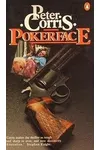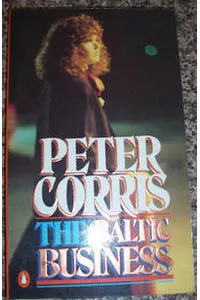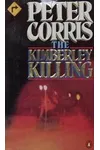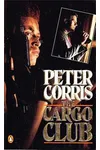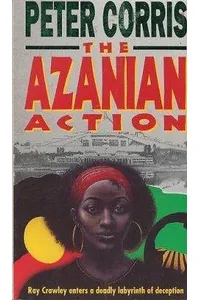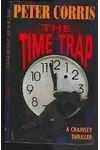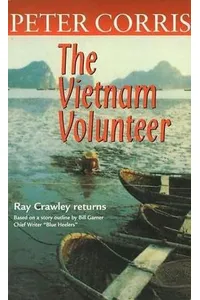Dive into the shadowy streets of Sydney with the Ray Crawley series, where gritty crime meets sharp social commentary! Penned by Australian crime fiction legend Peter Corris, this eight-novel saga (1985–2000) follows the morally complex Ray ‘Creepy’ Crawley, a former Federal Security Agency operative navigating a world of corruption, power struggles, and betrayal. With its hard-hitting plots and vivid portrayal of Australia’s underworld, it’s a must-read for crime fiction fans craving something raw and real.
Unlike the polished heroes of typical thrillers, Crawley’s rough edges and questionable choices make him a standout. From Melbourne’s sleazy backstreets to Brisbane’s post-Fitzgerald reforms, the series captures a pivotal era in Australia’s history with a cynical yet captivating lens. Ready to explore a crime saga that’s as Aussie as a cold stubby on a hot day? Let’s unpack Ray Crawley’s world!
How Ray Crawley Began
Peter Corris, often hailed as the ‘Godfather of Australian crime fiction,’ created Ray Crawley in 1985, hot on the heels of his wildly successful Cliff Hardy series. Inspired by gritty spy thrillers and his own stint as a journalist, Corris teamed up with writer Bill Garner to craft Crawley for an ABC TV series called Pokerface. Though the show, starring Bruno Lawrence, didn’t take off, the character found new life in novels. Corris saw Crawley as a darker, more cynical counterpart to Hardy—a Vietnam War veteran and ex-spy who thrived in the murky intersections of government and crime.
The series kicked off with Pokerface (1985), published by Penguin, and Corris’s knack for weaving real-world issues into fiction gave Crawley’s adventures a grounded edge. His background as a historian, with a PhD on Pacific history, also shaped the series’ focus on Australia’s socio-political landscape, making it a unique blend of entertainment and commentary.
The Heart of Ray Crawley
The Ray Crawley series spans eight novels, each plunging readers into high-stakes intrigue. Pokerface (1985) introduces Crawley, sacked from the Federal Security Agency and entangled with radicals in Melbourne’s underbelly. In The Japanese Job (1992), he investigates a Japanese businessman’s brutal murder in Brisbane, uncovering Yakuza ties and a mysterious militia group called the Diggers. The Vietnam Volunteer (2000), the series’ finale, sees Crawley in Canberra, caught in a revenge plot tied to his Vietnam War past. The Time Trap (1994) throws him into a web of espionage and betrayal, showcasing his knack for staying one step ahead.
Themes of corruption, power, and societal change run deep. Crawley’s world is one where politicians, police, and criminals blur lines, reflecting Australia’s struggles with post-colonial identity and global influence. Corris’s lean, no-nonsense prose and vivid settings—think Sydney’s neon-lit bars or Brisbane’s construction sites—ground the series in a distinctly Australian flavor. Unlike the polished espionage of James Bond, Crawley’s gritty realism and flawed humanity make every choice feel personal and perilous.
The series also shines for its character depth. Crawley’s cynicism masks a stubborn moral core, while supporting players like his ally Huck and enigmatic women like Mary Kurosawa add layers of intrigue. Fans praise the natural dialogue and Corris’s ability to make even villains feel human, flawed but relatable.
Why Ray Crawley Resonates
Though less famous than Corris’s Cliff Hardy series, Ray Crawley carved a niche in Australian crime fiction by tackling the spy thriller—a genre where local authors rarely succeeded. Its unflinching look at corruption and power dynamics struck a chord with readers, offering a mirror to Australia’s evolving identity in the late 20th century. The series’ blend of historical insight and pulpy action influenced later Aussie crime writers, proving you could tell bold, local stories without mimicking American or British models.
Today, Ray Crawley’s appeal lies in its raw authenticity and underdog charm. Fans on platforms like Goodreads celebrate its ‘laconic, irreverent’ hero and vivid sense of place, making it a hidden gem for those seeking crime fiction with a uniquely Australian edge. Its scarcity only adds to its cult status—tracking down these novels feels like a treasure hunt for dedicated readers.
- Publication Years: 1985–2000
- Number of Books: 8
- Key Setting: Sydney, Melbourne, Brisbane, Canberra
- Notable Collaborator: Bill Garner (storylines)
Ready to step into Ray Crawley’s gritty world? Hunt down Pokerface and brace for a wild ride through Australia’s crime-ridden underbelly!
